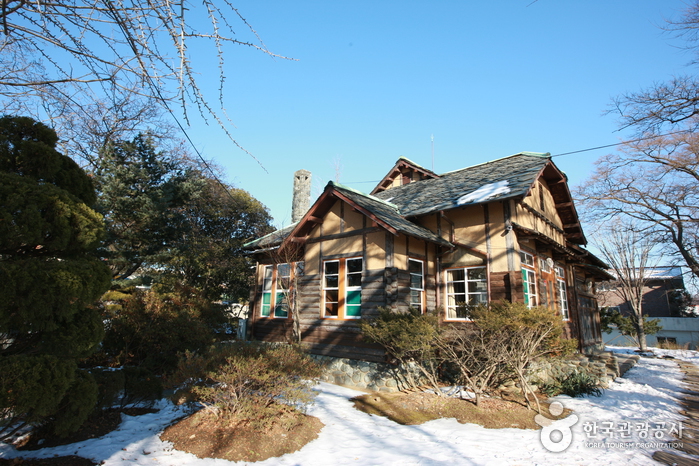Discover the Historic House of Lee Young-choon
Welcome to the House of Lee Young-choon, a truly fascinating tourist destination that offers a unique blend of history, culture, and architectural beauty. This historic house, located in Gunsan, South Korea, has a rich backstory that takes us back to the Japanese colonial era and the post-liberation period. Come and explore this remarkable place that has served as a backdrop for famous films and learn about the life and achievements of Dr. Lee Young-choon, the renowned doctor who called this house his home.
A Fusion of Western, Korean, and Japanese Influences
The House of Lee Young-choon was originally constructed by a Japanese landlord named Kumamoto during the Japanese colonial era. This architectural masterpiece seamlessly combines Western, Korean, and Japanese elements, creating a visually stunning structure that is a joy to behold. As you walk through its corridors and rooms, you’ll be transported to a different era, admiring the unique fusion of different architectural styles.
A Landmark in the World of Film
One of the reasons the House of Lee Young-choon has gained such popularity is its undeniable beauty, which has made it a sought-after location for filmmakers. The house has served as a backdrop for several notable films, including Bingjeom, Sandglass, and Yain Shidae. As you explore the house, you might recognize familiar settings from these cinematic masterpieces, adding an extra layer of excitement to your visit.
Unveiling the Life of Dr. Lee Young-choon
Dr. Lee Young-choon, the esteemed former occupant of the house, was known as the Korean “Albert Schweitzer”. His pen name, “Ho”, meaning “two branches of spring water,” reflects his dedication to healing both physical and spiritual ailments. Born in Yonggang-gun, Pyeongannam-do in October 1903, Dr. Lee Young-choon became the first medical doctor in Korea and left an indelible mark on the country’s healthcare system.
During his time as the head of Jahye Hospital, he cared for an incredible 20,000 people. Dr. Lee Young-choon was also a pioneer in implementing school nurses and establishing the medical insurance union in Korea. His contributions to society and healthcare are truly remarkable, and his legacy lives on within the walls of the House of Lee Young-choon.
Getting There
If you’re ready to embark on an enriching journey to the House of Lee Young-choon, here’s how you can get there:
- From Central City Bus Terminal or Dong Seoul Bus Terminal, take an express bus or intercity bus to Gunsan Express Bus Terminal or Gunsan Intercity Bus Terminal.
- Upon arrival at the bus terminal, head left for approximately 100 meters from the intercity bus terminal or 200 meters from the express bus terminal.
- At Palma Gwangjang Terminal Bus Stop, take Bus No. 85.
- Get off at Gunsan College of Nursing Bus Stop.
- From there, it’s just a short walk of around 140 meters to reach the House of Lee Young-choon.
Prepare to be captivated by the House of Lee Young-choon as you delve into its rich history, marvel at its architectural beauty, and learn about the remarkable life of Dr. Lee Young-choon. This extraordinary tourist destination promises an unforgettable experience that will leave you with a deeper appreciation for South Korea’s cultural heritage.

